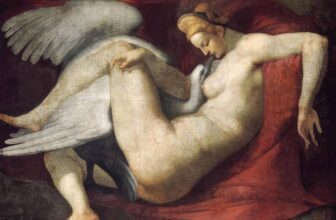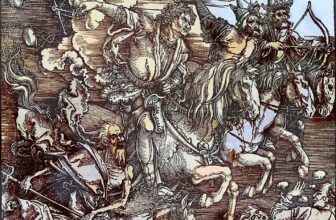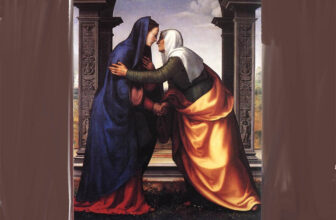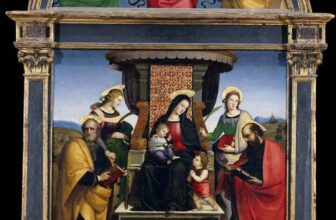What are The Most Famous Paintings of Carlo Crivelli
Shopping Ads: Invest in Hidden Masterpiece: Rare Antique Oil Paintings For Sale. Limited Originals Available 💰😊 Are you looking for authentic hidden masterpiece? Explore old master antique oil paintings from the Renaissance and Baroque eras. From 16th-century portraits to 18th-century landscapes. Authenticity guaranteed, Old Master antique oil paintings for sale. Shop Now! 🎨 Renaissance And Baroque Art Old Master Portrait Paintings Landscape Antique PaintingsIn the dazzling tapestry of Renaissance art, names like Leonardo da Vinci, Michelangelo, and Raphael often dominate the canvas. Yet, tucked within the gilded edges of this historical panorama is a painter whose style was so distinct, so ornamental, and so spiritually intense that it refuses to fade with time, Carlo Crivelli.
With a paintbrush that seemingly traced divinity into wood, Crivelli crafted works that shimmer with gold leaf, pulsate with minute detail, and whisper stories of saints, martyrs, and the mystical depth of Christian devotion. His art, characterized by its intense realism, rich iconography, and unmistakable Gothic elegance, still breathes across centuries, inviting viewers into a world suspended between heaven and earth.
Who Was Carlo Crivelli? The Story of the Man Behind the Frame
Carlo Crivelli was born around 1430 in Venice, at the edge of the early Renaissance wave. He was trained in the Venetian tradition but was later exiled from the city due to a personal scandal, he was imprisoned for committing adultery with a married woman. This exile profoundly shaped his artistic trajectory.
After leaving Venice, Crivelli moved to the Marche region in central Italy, where he found patronage and an audience more attuned to his spiritual, almost otherworldly style. While many of his contemporaries embraced perspective, naturalism, and secular themes, Crivelli remained firmly rooted in the ornate and transcendental. He leaned into late Gothic traditions, using heavy symbolism, elaborate gold backgrounds, and intricate detailing to elevate religious themes to divine heights.
Unlike the humanist Renaissance artists who depicted the world as it is, Crivelli painted how it might appear through the eyes of a saint or a mystic.
What Is Carlo Crivelli Known For?
Carlo Crivelli is best known for his altarpieces and devotional paintings, which shimmer with gold, embossed details, and emotionally charged figures. His work is characterized by:
Exquisite ornamentation: Crivelli often incorporated gilded surfaces, decorative textures, and trompe-l’œil illusions (such as realistic fruits or curtains).
Intense spirituality: His saints and Madonnas often have elongated fingers, sorrowful eyes, and halos that glow like sunbursts.
Meticulous detail: Every fold in a robe, every feather in a wing, and every pearl on a crown is rendered with obsessive care.
Gothic revival: While his contemporaries were embracing linear perspective and anatomical accuracy, Crivelli retained the mysticism of the Gothic age, making him both a relic and a rebel.
The Most Famous Paintings of Carlo Crivelli
Crivelli may not be a household name, but several of his paintings have gained international acclaim and are housed in prestigious collections. His most famous works include:
1. The Annunciation, with Saint Emidius (1486)
Location: National Gallery, London
This painting is Crivelli’s masterpiece and a standout of Renaissance art. Commissioned for the city of Ascoli Piceno, it depicts the Annunciation, the moment the Angel Gabriel tells Mary she will give birth to Christ. What makes it unforgettable is the surreal inclusion of architectural elements, a miniature cityscape, and a hovering beam of light from heaven that pierces the composition.
Saint Emidius, the patron saint of Ascoli, is bizarrely present at the Annunciation, a historical liberty that adds a layer of local civic pride to a biblical scene. A cucumber dangles above the Virgin’s door (a fertility symbol), and illusionistic elements, marble, flora, coats of arms, blend the sacred and the secular.
2. Madonna and Child Enthroned with Saints (1476)
Location: San Francesco Saverio, Montefiore dell’Aso
This altarpiece captures Crivelli at his spiritual best. The central Madonna and Child are surrounded by an entourage of saints, draped in resplendent robes and golden auras. The painting’s depth of texture, from the embroidery to the carved throne, is stunning.
3. The Lenti Madonna (c. 1472)
Location: Metropolitan Museum of Art, New York
This painting of the Madonna holding the Christ Child demonstrates Crivelli’s flair for tenderness, intimacy, and texture. The figures are rendered with emotional gravitas and minute detailing, while the background boasts Crivelli’s characteristic ornamentation.
4. Saint George Slaying the Dragon (1470s)
Location: National Gallery of Victoria, Melbourne
One of Crivelli’s most dynamic compositions, this panel combines the drama of the legendary battle with meticulous detailing of armor, landscape, and sky.
How Many Paintings Did Carlo Crivelli Create?
Art historians estimate that around 50 to 70 attributed works exist today, most of them panel paintings and altarpieces. Because Crivelli often painted in polyptychs, multi-paneled religious artworks, many pieces were later disassembled, sold, or relocated over centuries. These fragments are now scattered across museums in Europe and the United States.
While this number is modest compared to prolific contemporaries, the depth and complexity of each painting speak volumes. Each work is a cosmos of spiritual narrative, executed with obsessive care.
What Is Carlo Crivelli’s Most Expensive Painting?
While Crivelli’s name doesn’t frequently surface in blockbuster auctions like da Vinci or Caravaggio, his works are highly valued by collectors, institutions, and museums. The exact prices of his works are rarely disclosed due to the nature of private sales and museum acquisitions.
However, “The Madonna and Child” panels, when they have changed hands, have fetched millions of dollars, especially when their provenance is well documented. The painting “Saint Catherine of Alexandria”, formerly in private collections, was acquired by a major institution in the early 2000s for an estimated $5–7 million USD, making it one of the most expensive transactions involving Crivelli’s work.
It’s important to note that the market value is not just in the gold leaf or the age, but in the spiritual intensity and historical uniqueness of Crivelli’s style. Unlike other Renaissance painters, Crivelli’s work was never replicated or passed down in schools, each painting is a singular act of devotion and craftsmanship.
Where Are Carlo Crivelli’s Paintings Today?
Crivelli’s works are now scattered across the globe, housed in prestigious institutions, especially in Europe and North America. Some of the most notable locations include:
National Gallery, London – Houses several of his masterpieces, including The Annunciation, with Saint Emidius.
Metropolitan Museum of Art, New York – Contains The Lenti Madonna and other devotional works.
Museum of Fine Arts, Boston – Holds some of Crivelli’s saint panels and altar fragments.
Louvre Museum, Paris – Owns Crivelli’s altarpiece fragments and Madonna paintings.
Pinacoteca di Brera, Milan – Contains key pieces from his Italian commissions.
Victoria and Albert Museum, London – Several smaller devotional panels and studies.
National Gallery of Victoria, Melbourne – Saint George Slaying the Dragon.
Philadelphia Museum of Art – Holds early Crivelli works with a focus on saints and Madonnas.
Meanwhile, churches in Italy, especially in the Marche and Abruzzo regions, still preserve some of his original altarpieces in situ, making pilgrimages to these locations not just an art experience, but a spiritual one.
What Is Carlo Crivelli’s Legacy?
Carlo Crivelli was never a revolutionary in the way that Leonardo or Michelangelo were, but his legacy is one of resistance and spiritual purity. In an age increasingly fascinated by science, perspective, and the secular, Crivelli stayed loyal to the mystic, the miraculous, and the richly symbolic.
His paintings are often described as “jewels”, small in scale but immense in spiritual presence. Art historians today see Crivelli as:
A master of the Gothic-Renaissance transition.
A painter of mystical realism, bridging the worlds of faith and fantasy.
A symbolist before symbolism even had a name.
A uniquely Venetian artist who flourished far from Venice.
Modern scholarship has begun to reevaluate Crivelli’s place in art history. His refusal to adopt mainstream Renaissance aesthetics is no longer seen as backward, but rather as a deliberate, visionary choice to preserve a spiritual dimension that other artists abandoned.
Crivelli’s World Today: A Silent Revival
Interest in Carlo Crivelli is enjoying a quiet renaissance. Exhibitions like “Saints and Mystics: The Art of Carlo Crivelli” (held at the National Gallery, London) have rekindled public interest in his complex, hypnotic works. Contemporary artists, such as Grayson Perry, have cited Crivelli as a stylistic influence, admiring his decorative flair and deep psychological undertones.
His attention to surface and symbolism, once dismissed as outdated, is now seen as proto-modern, even avant-garde.
A Vision Gilded in Gold
Carlo Crivelli’s art may not shout, but it sings, a haunting, golden melody of faith, craftsmanship, and vision. In a world obsessed with innovation, Crivelli chose devotion. In an age of realism, he painted the miraculous. And in the ever-shifting canvas of art history, his work remains defiantly luminous, quietly defying the tide of change with a radiance all its own.
Whether standing before one of his Madonnas, awash in halos and embroidered robes, or marveling at a tiny cucumber painted with stunning realism, one thing becomes clear: Carlo Crivelli was not just painting saints, he was painting a gateway to the divine.




